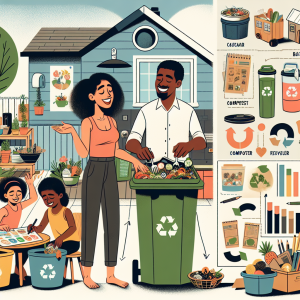Reimagining Urban Mobility: The Shift Towards Electric Vehicles
The electrification of vehicles represents a crucial pillar in the quest for greener transportation. As technology advances, electric vehicles (EVs) have evolved from niche products to mainstream contenders. Governments and auto manufacturers are investing heavily, with countries like Norway leading the charge where over 75% of new cars sold are electric. This transformation is driven by several factors: significant reductions in lithium-ion battery costs, extended ranges of up to 400 miles per charge, and the growing network of charging infrastructure.
While early adopters prioritized environmental concerns, today’s consumers are attracted by lower maintenance costs and superior performance. With zero tailpipe emissions, EVs offer a tangible reduction in urban air pollution, crucial for improving public health. Moreover, renewable energy integration into charging stations can further decarbonize the transportation sector, enhancing the overall sustainability of electric mobility.
Hydrogen Fuel Cells: The Future of Long-Distance Travel
Hydrogen fuel cells offer a complementary solution, particularly for heavy and long-distance transportation demands. Unlike batteries, hydrogen fuel cells can provide longer ranges and faster refueling times, essential for freight and public transport. Countries like Japan and South Korea are actively developing hydrogen infrastructure, aiming to become global leaders.
This technology converts hydrogen gas into electricity, emitting only water vapor, thereby addressing both air quality and climate change concerns. Challenges remain, particularly around the green production of hydrogen and the current costs, but advancements in electrolysis and increasing political will are paving the way for this promising technology.
The Role of Autonomous Vehicles in Smart Transportation
Autonomous vehicles (AVs) have the potential to revolutionize transportation systems, enhancing efficiency and safety while reducing emissions. By integrating AVs with smart city infrastructure, traffic congestion can be alleviated through optimized traffic flow and vehicle sharing. AVs can operate more efficiently than human drivers, choosing optimal speeds and routes, which can lead to reduced fuel consumption and lower emissions.
Moreover, ride-sharing models facilitated by AVs can reduce the number of cars on the road, contributing to decreased urban pollution. However, the transition requires robust legislation, ethical frameworks, and advances in AI technology to address safety concerns.
Urban Public Transport Innovations
Cities around the globe are reinventing public transport systems to make them more sustainable. Electrified buses, trams, and trains are at the forefront, running on renewable energy sources to minimize carbon footprints. For instance, Hamburg in Germany is investing in a zero-emission public transport network scheduled for completion by 2030.
Investment in Bus Rapid Transit (BRT) systems and efficient metro networks can offer high-capacity, low-emission alternatives to individual car use. These systems not only reduce greenhouse gas emissions but also alleviate traffic congestion, promoting economic productivity and quality of life.
Micro-Mobility and Active Transport Solutions
Micro-mobility options, including e-scooters and bicycles, are increasingly favored for short-distance travel. These modes, often powered by renewable energy, offer flexible and low-impact alternatives to traditional vehicles. City planners are expanding bike lanes and pedestrian paths to support these trends.
Active transport solutions, such as walking and cycling, are being promoted through urban design improvements. These initiatives are health-positive and emission-free, contributing to personal well-being and environmental sustainability. Cities like Copenhagen exemplify how cycling can become a primary transport mode, with over half of all commutes done by bicycle, thanks to extensive infrastructure and supportive policies.
Integrated Mobility-as-a-Service Platforms
Mobility-as-a-Service (MaaS) platforms are reimagining transportation by integrating various modes into a single, streamlined service. These apps enable users to plan, book, and pay for a range of transport options, from public transport to bike-sharing and ride-hailing, using a single platform.
By providing real-time data and flexible routing, MaaS can significantly improve urban mobility while reducing reliance on private vehicles. The successful implementation of MaaS could lead to more efficient transport systems, lower environmental impact, and enhanced user convenience.
Policy and Governance for Sustainable Transportation
Steering the future of transportation requires comprehensive policy frameworks at both local and international levels. Governments play a pivotal role in incentivizing low-emission vehicle adoption through subsidies, tax rebates, and regulatory mandates on automakers to produce greener vehicles.
Investment in infrastructure, such as charging stations and hydrogen refueling points, is essential to support the transition. Collaborative efforts between public authorities and private enterprises can drive technological innovation and infrastructure development. Furthermore, urban planning regulations need to prioritize sustainable transport modes to ensure long-term efficacy.
The Economic and Environmental Imperatives
Transitioning to sustainable transportation is not only an environmental necessity but an economic opportunity. The global market for green transportation is expanding, offering job creation in sectors ranging from technology development to construction and logistics.
Efforts to curtail carbon emissions align with broader environmental policies aimed at mitigating climate change. Successful implementation of greener transportation models will result in substantial reductions in greenhouse gases, contribute to global carbon neutrality goals, and protect biodiversity by reducing habitat intrusion and pollution.
In sum, reimagining transportation for a greener future involves a multifaceted approach where technology, policy, and urban planning converge. By harnessing innovative solutions like electric and hydrogen vehicles, autonomous systems, and integrated mobility platforms, cities can become more sustainable, livable, and resilient to future challenges.


